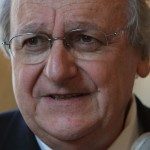Link to Pubmed [PMID] – 23543670
Eukaryotic Cell 2013 Jun;12(6):794-803
Megasatellites are large DNA tandem repeats, originally described in Candida glabrata, in protein-coding genes. Most of the genes in which megasatellites are found are of unknown function. In this work, we extended the search for megasatellites to 20 additional completely sequenced fungal genomes and extracted 216 megasatellites in 203 out of 142,121 genes, corresponding to the most exhaustive description of such genetic elements available today. We show that half of the megasatellites detected encode threonine-rich peptides predicted to be intrinsically disordered, suggesting that they may interact with several partners or serve as flexible linkers. Megasatellite motifs were clustered into several families. Their distribution in fungal genes shows that different motifs are found in orthologous genes and similar motifs are found in unrelated genes, suggesting that megasatellite formation or spreading does not necessarily track the evolution of their host genes. Altogether, these results suggest that megasatellites are created and lost during evolution of fungal genomes, probably sharing similar functions, although their primary sequences are not necessarily conserved.


